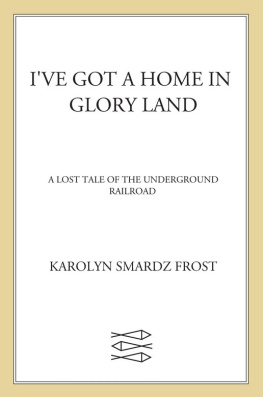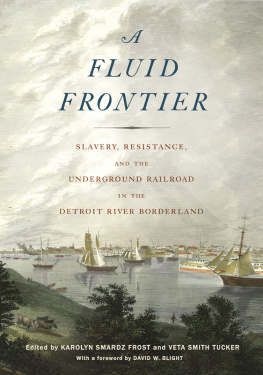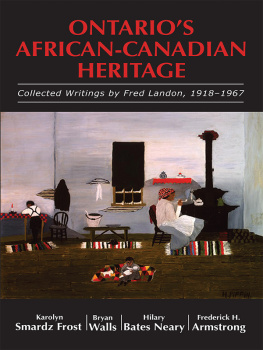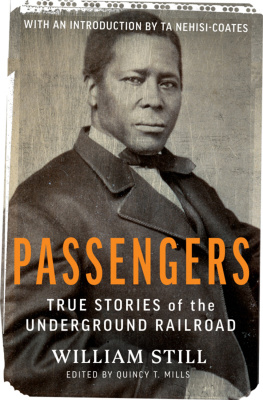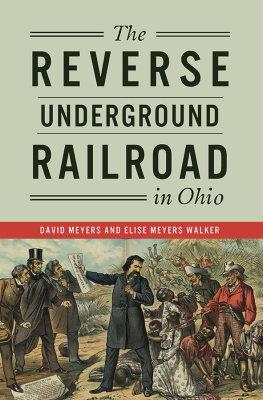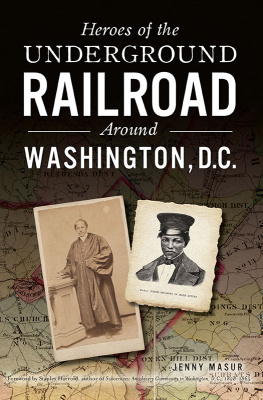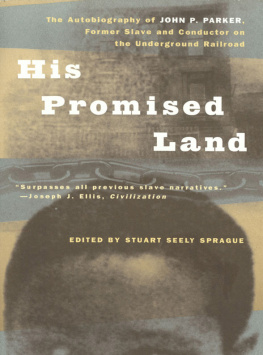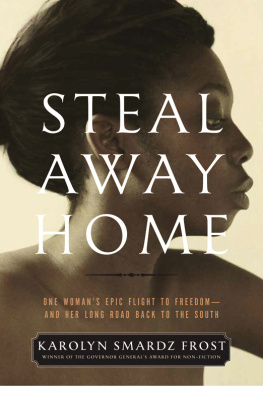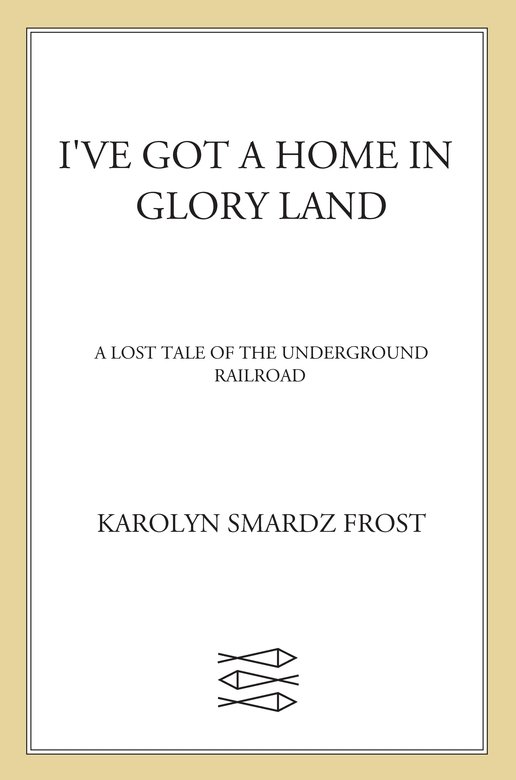Fugitive slave history is a complex and time-consuming field of research. Still more so is reconstructing the personal lives of individuals who, like the Blackburns, experienced lifelong illiteracy. Photographs of neither Thornton and Lucie nor of the African Americans and African Canadians who helped them in their quest for liberty have surfaced. I hope the people who worked so hard to help me find images over the years know how much I appreciate their efforts.
The idea of writing about the Blackburns came about during the archaeological excavations at their home in 1985. Noted scholars of African America Drs. James Oliver Horton and Lois E. Horton flew to Toronto after hearing about the dig on a Washington, D.C., radio program. This volume was their idea, and I thank them from the bottom of my heart.
The Ontario Ministry of Culture provided substantial early funding, as did the Toronto Board of Education, Multiculturalism Canada, and the Ontario Heritage Foundation. Nola Crewe, Ron Halford, Edward Mc-Keown, Audrey Howard, Rob Mewhinney, and later on Ron Kendall of the Toronto Board of Education made possible Canadas first Underground Railroad dig and the educational programs that developed out of it. Board Archivist Donald Nethery and his partner, Gary Moriarity, were there for me from the beginning, and it is a great sorrow that Donald never lived to see the final results.
Special thanks are due to Peter Hamalainen, my archaeology and education partner for more than a decade, material culturalist Ellen Blaubergs, the late Rod Crocker, and all the staff and students of Torontos much-lamented Archaeological Resource Centre. We all miss Duncan Scherberger, whose public relations talents made Thornton and Lucie come alive for so many people in the summer of 1985. Christopher Koch was site photographer, and I am honored by his friendship to this day. In additionto the hardworking Ministry of Culture archaeologists, especially Roberta OBrien, who discovered the site with me, I have always been very grateful for the support of the Ontario Black Historical Society. President Emeritus Dr. Daniel Hill, President Paul Anderson, and executive directors Lorraine Hubbard and Glace Lawrence contributed materially to the success of the project, and particularly to ensuring its high public profile. Many years later, Rosemary Sadlier of the OBHS petitioned to have the Blackburns designated Persons of National Historic Significance. In Kentucky, Celeste Lanier and Diane Wells were responsible for the Blackburn plaque erected in Louisville in April 2002.
Dr. Anne Butler of Kentucky State University hosted me for literally months at her home, arranged the Blackburn celebrations in Louisville, and shared both her own research and her dedication to truth in history with me. The Kentucky African-American Heritage Commission, chaired by Dr. Blaine Hudson of the University of Louisville and directed by Nicole Harris, funded my study of the Blackburns lives in slavery. Don Ball, formerly of the U.S. Army Corps of Engineers, befriended me, put me up, and did history with me whenever I was in Louisville. Kentucky archaeologists Anne Bader, Nancy OMalley, and Phil DiBlasi provided assistance at important points in the process.
The staffs of Louisvilles Filson Historical Society (thanks, Jim Holmberg, Pen Bogert, and Becky Rice!), the Kentucky State Archives (Jim Pritchard, I appreciate everything you do for me), the Kentucky Historical Society, the Breckinridge County Archives (Karen Schafer and Sylvia Hinton, you have been so helpful), and Maysvilles Kentucky Gateway Museum Center deserve endless thanks. Alicestyne Turley-Adams and Dr. Lindsey Apple of Georgetown College in Kentucky, as well as Jerry Gore of Maysvilles National Underground Railroad Museum, have given crucial assistance. My genealogy buddies, some known only over the Internet, are legion, but I will mention here Anne Huntsman, Jim Hancock, Mary Ann Dickerson Shoemaker, Patricia Duncan, and especially Farris Womack, who manages the Talbot family Web site and helped me locate descendants of the slaveholders involved in the Blackburn story. As for the Chovil family and Susan Curran White, her brother, and her sister, I cant thank them enough for sharing the Brown and Oldham portraits with the world.
Further afield, a Mellon Fellowship from the Virginia Historical Society made research in Richmond possible, where the VHS Director for Library Services, Frances Pollard, deserves special mention, as does my dear friend and perennial Virginia hostess, Martha Williams. The late John Hemphill and his wife, Dr. Gail Terry, were extremely helpful. I must thank the excellent people at the National Archives and Library of Congressin Washington, D.C. Peter Hanes of the U.S. Parks Service has been both enthusiastic and caring, while independent historian Charles Brewer has shared his prodigious knowledge and his time. I also received a fellowship from the Anderson Centre at Red Wing, Minnesota, and while at the Institute for Minnesota Archaeology I spent hours ruminating over my research with Dr. Clark Dobbs and Rhoda Gilman. Ellen Eslinger, thanks for sharing your unpublished research with me.
My appreciation and admiration go to Michigan historian Dr. Norman McRae, who has been so generous with his own superbly researched Blackburn data. The staffs of the Burton Historical Collection at the Detroit Public Library, the Michigan State Archives at Lansing, and the Clement Library and the Bentley Historical Collection at the University of Michigan have been very helpful, and the Bentley also provided research funding. I hope Dr. David Katzman will accept my thanks for his critical review of the relevant chapters. To the late Norman Leach and to Bobbie Fowlkes-Davis of Detroits Second Baptist Church, I offer both thanks and praise for your lifelong dedication to preserving so valuable and unique a heritage.
In Toronto, the people at the Baldwin Room (especially Christine Mossop and Alan Walker) and the City of Toronto Archives (thanks, Karen Teeple, John Huxil, Steve MacKinnon, and Glenda Williams) have gone above and beyond the call of duty to assist in this research. I miss Leon Warmski at the Archives of Ontario, who passed on many tidbits of history. My friends and coauthors on other projects, Dr. Afua Cooper and Adrienne Shadd, have argued at length the finer points of black history research with me, for which I am ever grateful. I also learned much from Shannon Ricketts, Derek Cooke, and Owen Thomas at Parks Canada. I would be remiss not to mention my friend Judith McErvel, who has shared both her archival expertise and many wide-ranging conversations about history with me. Tom Brooks, I truly appreciate your depth of knowledge about Canadians in the U.S. Colored Troops.
I am particularly indebted to the enormous depth and breadth of knowledge of Canadas preeminent historian of race, Dr. James W St. G. Walker, which informs this work throughout. His assistance to the research began well before I first became his doctoral student at the University of Waterloo in 1997. My costudent and dear friend Stephanie Bangarth has always been there to listen, critique, and argue, something I greatly value. Thanks also to secretaries Irene Majer and Nancy Birss at the History Department, for absolutely everything. The Social Sciences and Humanities Research Council of Canada funded my doctoral and postdoctoral work on the Underground Railroad, and University of Waterloo Alumni Fund bursaries always arrived just in the nick of time. I would like to thank Dr. LeslieSanders at York Universitys Atkinson College for her friendship and unfailing support.

